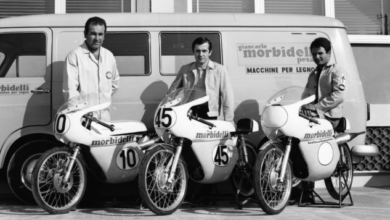AMA clarifies regulations on kit and custom bikes – April 3, 2006
The American Motorcyclist Association’s government relations team met with Environmental Protection Agency officials to clarify emissions regulations.
“Even though these regulations governing motorcycle emissions were approved a couple years ago, there’s been a lot of misunderstanding surrounding them,” said Edward Moreland, AMA’s vice president for government relations. “The regulations themselves are complex and difficult to summarize, and many attempts to explain them have been incorrect. We wanted to have in-depth discussions with EPA officials so we know exactly what these new regulations mean for American motorcyclists.”
Moreland, AMA Washington Legislative Assistant Peter Nonis and AMA Legislative Affairs Specialist Imre Szauter met with EPA technical officials at the agency’s headquarters in Ann Arbor, Mich., last month, seeking clarification on current EPA regulations related to “kit” and “custom” motorcycles.
Kit bikes are motorcycles typically built by individuals using off-the-shelf components, while custom bikes are generally show bikes built by a business and sold to a customer.
Under current regulations, a person is allowed only one kit motorcycle in their lifetime that is exempt from meeting EPA emissions requirements. For custom motorcycles, a builder may create and sell up to 24 bikes a year that don’t meet EPA emissions requirements, but those machines must be labeled as exempt and only rarely may be ridden.
Before the EPA adopted these new rules in 2004, it was illegal for anyone to ride any street motorcycle built in 1980 or later that did not meet EPA emissions requirements.
The current EPA rules require new road motorcycles sold nationwide beginning with the 2006 model year to meet strict emissions standards adopted earlier by California. The first phase of the California standards went into effect in 2004, with a second tier scheduled to go into effect in 2008. The EPA adopted the same standards but with a two-year delay, meaning the first phase took affect this year and the second phase will take affect in 2010.
New motorcycles sold in California beginning with the 2004 model year, and nationwide beginning in 2006, may not emit more than 1.4 grams per kilometer of hydrocarbons and nitrogen oxides, and 12 grams per kilometer of carbon monoxide.
The California standard gets tougher in 2008, with a limit of 0.8 grams per kilometer of hydrocarbons and nitrogen oxides and 12 grams per kilometer of carbon monoxide. The federal standard that goes in effect in 2010 is the same.
When the EPA issued its final rules, the provisions related to kit and custom bikes were new, which the AMA notes led to the confusion surrounding them.
All major motorcycle manufacturers’ streetbikes meet federal 2006 emissions standards, and several manufacturers’ products already meet the 2010 standards.
The AMA actively voiced motorcyclists’ concerns to the EPA from 2001 through 2004 as the federal agency worked to put together the new EPA emissions requirements. AMA officials said the organization will continue to voice motorcyclists concerns to the EPA, and seek clarification on the rules. psb




